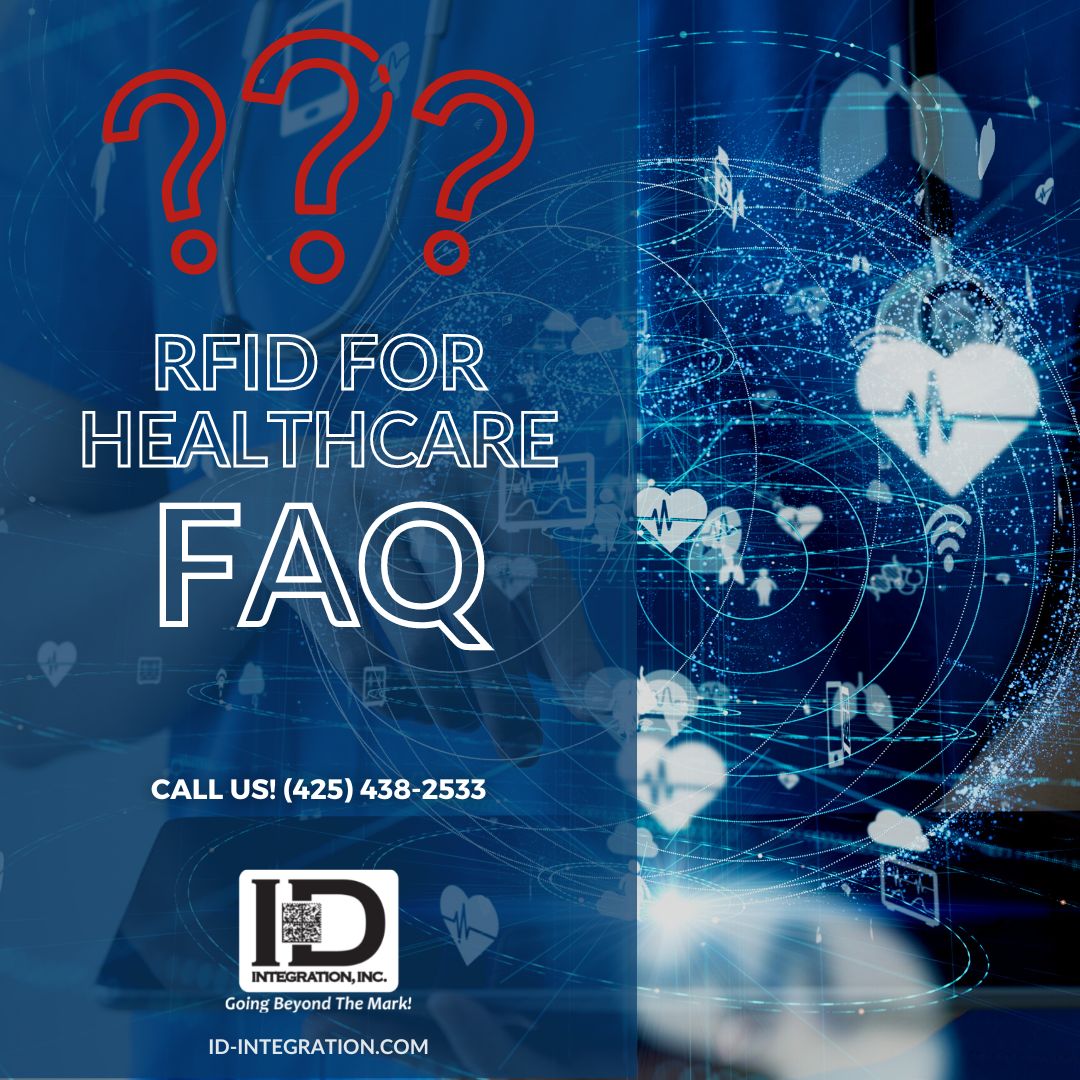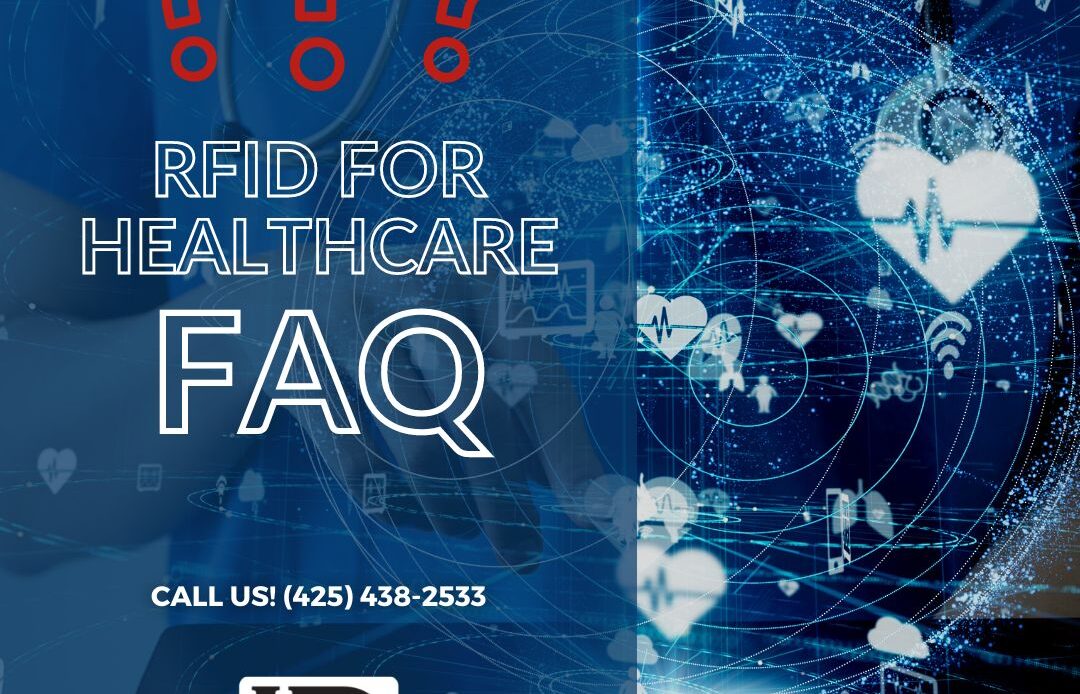RFID for Healthcare FAQs—The ID Integration Team Answers Your Questions
To help your healthcare facility get on board with this new technology seamlessly, we offer a complete suite of solutions that make data capture effortless: Smart Cabinets that track item usage and inventory, Snap & Go visual recognition technology, and active RFID Tags and/or ReStock Tags to oversee order status of items, track assets and equipment in real time, and keep tabs on the locations of wheelchairs, gurneys, IV pumps, ventilators, and surgical equipment. We also provide the software to manage, in real-time, the data collected to create reports, update patient records, and complete requisitions with the push of a button.
This cutting-edge technology works like magic. We know you have questions, so our team collected your most frequently asked questions and answer them here to unlock this mystery.

For asset tracking and inventory management, we typically use UHF (or RAIN RFID) because we get much longer read ranges and higher data throughput. We use three different frequency ranges for passive RFID operation: LF (low frequency – 125 -134.2 kHz), HF (high frequency – 13.56MHz), and UHF (ultra-high frequency – 860 – 960 MHz).
Because the RFID labels and tags are passive, they do not emit any radiation themselves, unless a handheld or fixed RFID reader is activated to read a tag. Use our Snap & Go data capture technology instead, because it uses optical imagery to recognize surgical items. Our Smart Cabinets are also safe for OR use because they do not emit any RF radiation.
Yes! ID Integration carries tags that are approved for autoclave sterilization and have been tested in over 700 autoclave cleaning cycles. Adhere them to surgical instruments, equipment, and trays without concern.
Yes! We offer a wide variety of tags in all shapes and sizes, along with printable RFID labels, designed to attach to metal surfaces. You’ll need to get RFID labels created specifically to adhere to metal surfaces, and we can provide them for you.
Yes! We even have a variety of different sized tags and printable RFID labels specially designed for attachment to liquid products. Our in-house experts suggest considering tags rated for liquid products be attached to items, such as wood, that have moisture content to give better read ranges.
Our LogiPlatform Cloud-Web Server is the brain behind the IDENTI Medical’s RFID Smart Cabinet and Snap & Go. It provides real-time supply management, and there is no interference between this system and your hospital network. In more technical terms, the communication is between the hardware (HW) and the software (SW) on the cloud and only through a SIM card or secured port on site. Therefore, there’s no interaction between the sensors to the local software. IDENTI Medical uses web services without pushing information—Your hospital will pull the information and thus you can continue relying on your own security tools.
Our RFID Cabinets are truly Smart Cabinets. When they are disconnected from the electricity, the electromagnetic locking mechanism turns off and the doors unlock. The LogiPlatform software system reports to you when a Cabinet is connected/disconnected from a power supply or internet connection. If anyone removes products from the cabinet during the time that it is offline the LogiPlatform will show in the reports that an OFFLINE REMOVAL has occurred. This status of the product’s removal will update once the cabinet is back online.
You’ll find it more cost effective to buy new Smart Cabinets, already equipped with the latest technology.
ID Integration can supply an on-site team to provide tagging services for existing equipment. We also train and support our customers with RFID hardware and software to apply RFID labels and tags to equipment.
If you are brand new to RFID technology, we have a special page that covers the basics. Visit our popular RFID FAQ page for the intel on RFID fundamentals.
To take a deeper dive into the proven efficacy of automated data capture technology for healthcare applications, download our free solutions guide “Transforming Healthcare: Smart Automation for Hospitals and Patient Care.” We also posted articles for further research in our blog “How to Avoid Using Expired Medical Equipment”, “How to Improve Patient Safety With Technology”, and “Discover Successful Ways to Implement RFID for Healthcare”.
When you are ready to find out which automated data capture solutions will fit your particular needs, and to get your own specific questions answered, contact the ID Integration specialists for a one-on-one, no-obligation consultation at (425) 438-2533.

